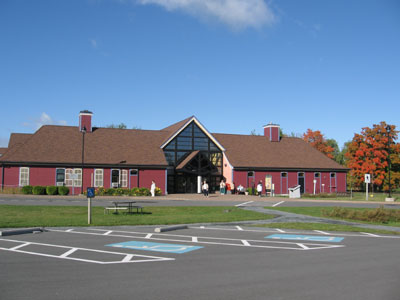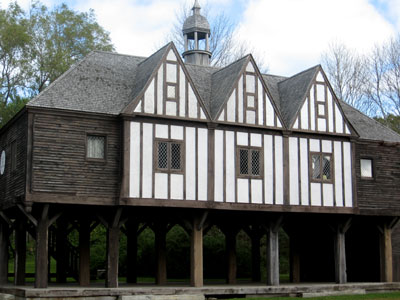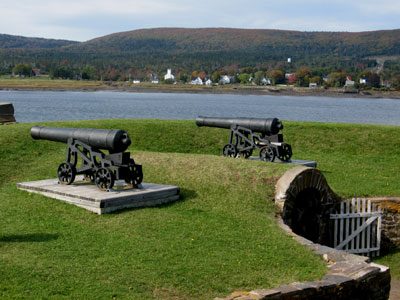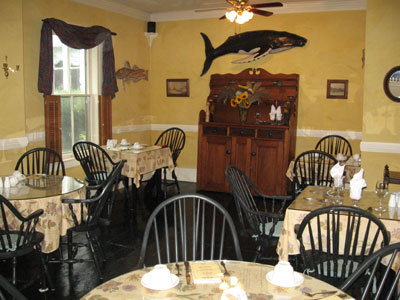It’s always exciting to arrive in a new city. I like arriving at night, so the suspense of this new place stretches into the next morning. After a late arrival via Westjet at about 11:30 last night at the Halifax Airport, I picked up my rental car at the Thrifty Counter from a very friendly customer service representative on duty who inquired whether he was going to be mentioned in my Nova Scotia travel experiences – so here you go, this is a little shout-out to the friendly young man working the late shift at Thrifty’s who gave me my first welcome in Nova Scotia.
I then checked into the nearby Hilton Garden Inn for a brief, but hopefully effective night of rest. Early this morning I got into my rental car and on my way to my first destination: the Grand Pré National Historic Site which commemorates the lifestyle and expulsion of the Acadians, original French settlers that came to this area in the 1600s. I first drove south from the airport to locate Highway 101 and after several unsuccessful attempts to find the right exit I finally linked up with the big highway that connects Halifax with Nova Scotia’s western shore. The interior of the peninsula is made up of gently rolling forested hills and as you reach the northern shoreline, the land flattens out into tidal mudflats. Windsor, Hantsport and Wolfville are the major local settlements and the main body of water, the Minas Basin, features the highest tides on earth.

The Visitor and Interpretation Centre at the Grand Pré National Historic Site
Less than an hour and a half after my departure I reached the Grand Pré, French for “large meadow” where I met Victor Tétrault, Executive Director of the Société Promotion Grand-Pré, who filled me in on the history of this site. The Grand Pré is an ancient settlement of the Acadians, descendants of the original French settlers in north-eastern North America. Acadians originally settled the areas around Nova Scotia, New Brunswick and Prince Edward Island in the 1600s and are culturally distinct from the French immigrants that settled in Quebec. The earliest Acadian settlement took place in Port Royal, less than two hours west of the Grand Pré, in 1604.

Acadians were astute farmers and through an ingenious system of dykes they managed to reclaim large tracts of land from the ocean. Victor explained that studies have shown that many farming communities of this era were really based on subsistence farming, where the average wealth base was “one unit of livestock” per person . The Acadians were rather wealthy since their average wealth per person was estimated at 8 to 9 units of livestock. They generated more agricultural products than they needed for their own consumption and started trading their surpluses with surrounding communities.
The Acadian settlers were also a peaceful group and got along well with the local Mi’kmaq Indians, even learning their time-honoured fishing and hunting techniques. The Mi’kmaq had developed a fishing technique that involved a network of criss-crossed stakes that would be set up in the tidal flats during low tide and when the water levels rose, this mesh of wooden sticks would simply trap fish and all that was necessary was just to go out there and pick up the fish.

The reception area of the Visitor Centre
Territories in north-eastern North America changed hands numerous times between the English and the French in the 1600 and 1700s and the Acadians decided to remain neutral, refusing to take either side. In the Treaty of Utrecht of 1713 France ceded Acadia as a British procession, at which point the area became known as Nova Scotia. During the following years, the British Governor Richard Phillips tried to coerce the Acadians to swear an oath of allegiance to the British Crown, but the Acadians steadfastly refused. Consequently, the decision was made that the “French Neutrals” needed to be removed and deported from their territories. Thus the Great Expulsion, the “Grand Dérangement”, a brutal act of ethnic cleansing, began.
Between 1755 and 1763 about 10,000 Acadians were rounded up and deported to locations in New England, Maryland, Pennsylvania, Virginia, North and South Carolina and Georgia, even as far awa as Martinique and St. Domingue. Some Acadians were deported back to France, while others tried to hide in the woods, often sheltered by their friends, the Mi’kmaq. Some Acadian settlers made their way to relative safety in Quebec. Many families were torn apart, their houses were burnt, their livestock killed and fields destroyed. A great many Acadian settlers ended up in the former French territory of Louisiana where the Acadians became known as the “Cajuns”. Some families were expelled five or more times from different locations they were deported to.

The Grand Pré National Historic Site, view towards the Memorial Church
Although there were numerous deportations of different groups during these turbulent historic times, the deportation of the Acadians was unusual because so many were not sent back to France, their country of origin, or another French colony. Instead they were deported to British territories where Anti-Catholicism was rampant, and in the southern colonies it was feared that the Acadians would join slaves in a general uprising.
Once peace returned in 1763, some Acadians started to migrate back but they never settled in their original settlement areas again. Instead, many Nova Scotia Acadians moved into the area around Baie Ste-Marie or St. Mary’s Bay between Digby and Yarmouth where they took up fishing as a livelihood. Today hundreds of thousands of people across all of North America and beyond can trace their origins to the Acadian Diaspora.

Display depicting the original Acadian settlement area




